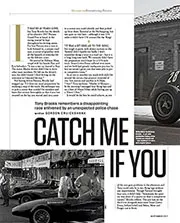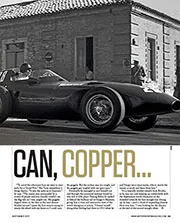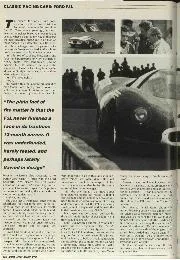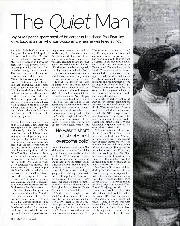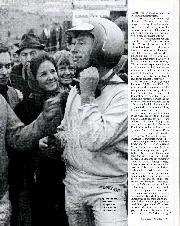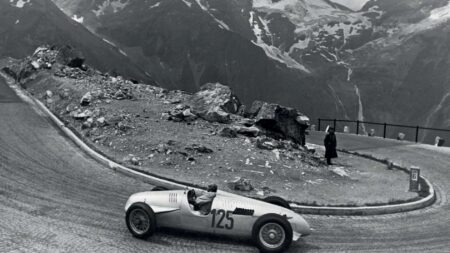“It may be 60 years gone, but Tony Brooks has the details of his abortive 1957 Pescara Grand Prix to hand, in the racing journal he kept throughout his driving career. For him Pescara was a race to look forward to, a proper road race, a circuit of grandeur with all the hazards of everyday life on the Adriatic coast.
“He arrived by Hillman Minx coupé with his fiancée Pina and Roy Salvadori: “It was a test car loaned to Roy. The Aston Martin drivers didn’t like to drive other team members. He left me the driver’s seat, but didn’t know I liked driving on the continent so I enjoyed the trip.”
“Not having driven Pescara, Brooks had mugged up: “I’d done my usual preparation by studying a map of the track. My technique was to pick a corner that couldn’t be mistaken and learn that section thoroughly, so that if you lost yourself on the lap you waited until you came to a corner you could identify and then picked up from there. Essential at the Nürburgring, but not quite so vital here – although it was 15½ miles it didn’t have 176 corners like the ’Ring!”
The Ford F3L: Blue Oval’s doomed ‘other’ 1960s sports car

Ford F3L: a sight to behold, if not a car for big results
Getty Images
It had the best engine, a proven design team, prime drivers, Ford’s blessing, and it looked sensational. How could the F3L fail?


